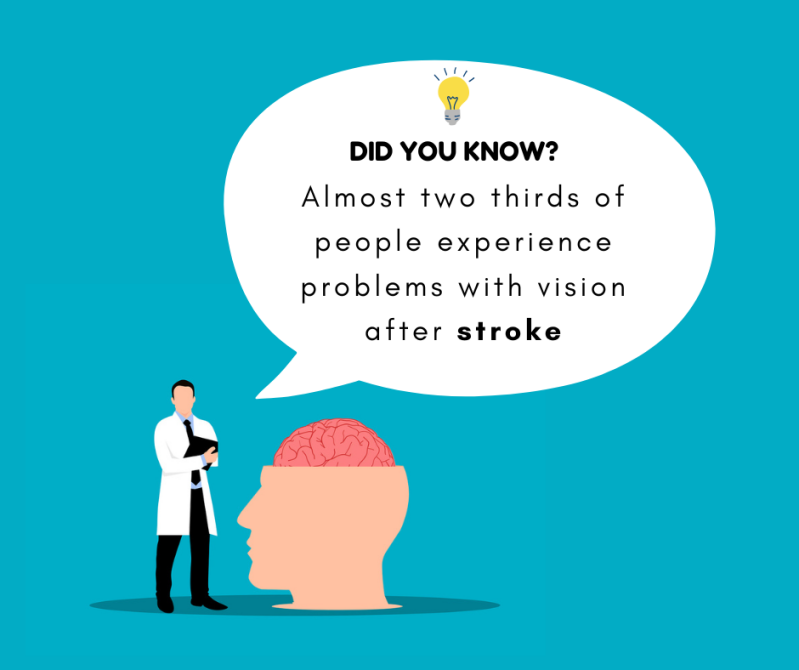Have you experienced problems with vision after stroke? Do you find it hard to explain to others what is going on with your vision? You are not alone!
Almost two thirds of people experience visual difficulties after stroke
Visual problems vary, depending on the location and severity of the affected area in the brain.
Common and well-known problems are blurry vision, double vision and visual field loss (most commonly not seeing on one side of the body).
Less well-known visual difficulties are related to visual recognition and visual perception, spatial awareness and attention. These difficulties are more difficult to identify and understand.
Understanding the visual difficulties a person is experiencing is essential for their ongoing support. Once the difficulty is understood, one can make adaptations and teach strategies to overcome these difficulties.
For example, if a person has lost the ability to see below their waist level, they would benefit from organising their storage space, so that all important items are kept above waist level. For a person with difficulties in cluttered or crowded spaces, a tidy and minimalistic environment can be helpful. If a person cannot see on their left side, one needs to think about strategic positioning for activities and conversations.
A CVI assessment is a good place to start
Book your appointment with Cirta Tooth:


